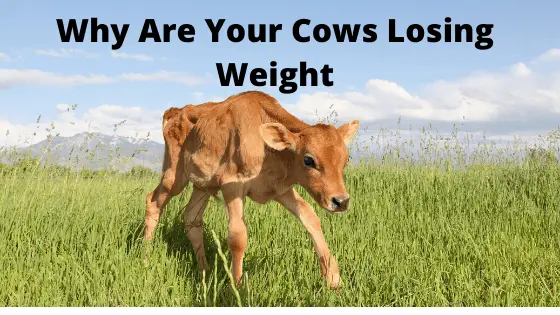As a General Rule, Unexplained weight loss may be due to a heavy parasite load, External parasites,
Internal parasites, gastrointestinal parasites, or dietary deficiencies. Rumen Acidosis: Cholic, Grain Overload, Bloat, Hardware disease, Wooden tongue, Protein Deficiencies, Vitamin deficiency These are the big Culprits.
Cow Eating but Losing Weight
Why Cows are Losing Weight? In the past, primitive societies believed that evil spirits and divine wrath could cause an animal to lose weight, reports veterinary epidemiology. Now, scientists understand that viruses, bacteria, and other microorganisms can infect cattle and cause serious diseases, which they can diagnose partly through the observation of weight loss. However, despite the advances in veterinary medicine and the use of vaccines, some diseases are still a threat to cattle breeders.
See Amazons Educational Resources for Cattle Diseases
For the Dairy or Beef Farmer is business threatening if your cows are losing weight. Either your cows are sneaking out for “Daily Spa visits”, or something is wrong.
We are going to examine some of the most important causes that could cause your Herd to begin losing weight. There are the following reasons:
Why Cows are Losing Weight / Cattle Diseases that Cause Weight Loss
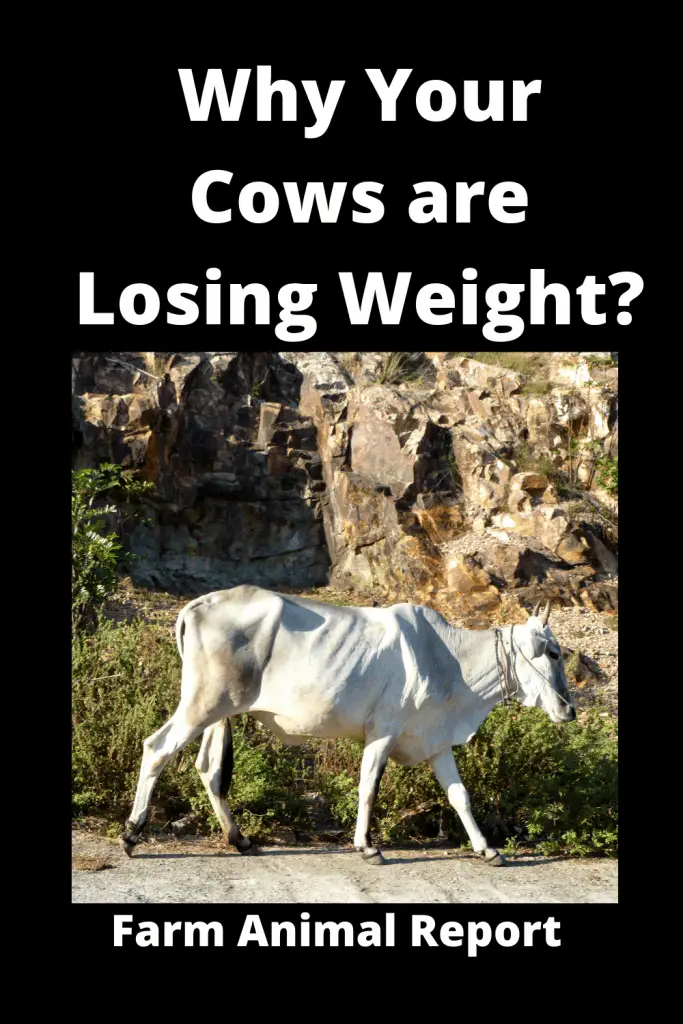
There are the following diseases that cause weight loss: We also encourage that in addition to research on your Own please consult a Local Veterinarian that specializes in Cattle Diseases.
John’s Disease Cause Cow Weight Loss
John’s disease is also called paratuberculosis, john’s Disease is caused by the bacteria Mycobacterium paratuberculosis. The infection is often difficult to diagnose at its early stages, according to cattle today. It causes intestinal inflammation that results in low milk production, diarrhea, and, consequently, drastic weight loss.
According to the British Department for Environment, Food and Rural Affairs Defra, there is no cure for John’s disease, thus farmers have to put down infected animals to avoid further contamination.
Cattle weight Loss from – Enzootic Bovine Leukosis(EBL)
The disease is caused by a virus, which is responsible for the appearance of leukemia and multiple tumors.
The progressive loss of weight, anemia, weakness, and anorexia are among the symptoms, reports the British Department for Environment, food and Rural Affairs-Defra. Skin lesions and tumor formation in various organs, such as intestines, liver, and lymph nodes, can also happen. Farmers must slaughter all infected cattle.
Cows with Bovine Spongiform Encephalopathy(BSE):
Bovine spongiform encephalopathy, or BSE, is a new neurological disease that can touch or sound, weakness of the hind legs, skin tremors, excessive nose licking and loss of body condition, weight, or milk production, according to the British Department for Environment, Food, and Rural Affairs-Defra. The disease lasts for many weeks and it is fatal.
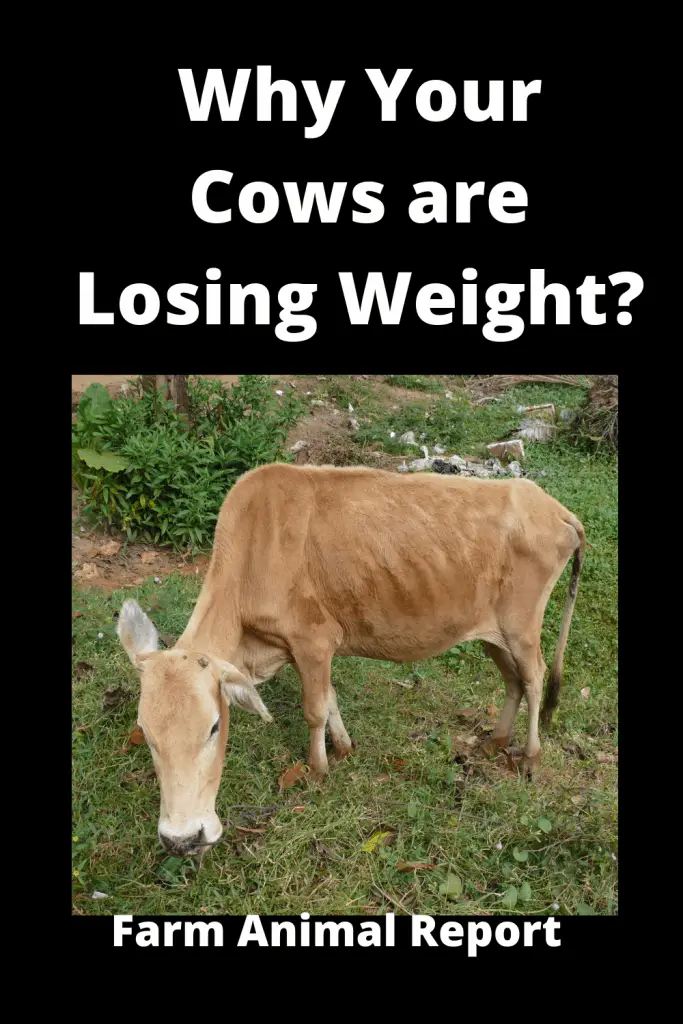
Cows with Malignant Catarrhal fever:
There are 2 different forms of the disease.
Head and eye form
- Usually occurs in single animals
- Sudden onset of fever, depression, lack of appetite
- A big drop in milk production in lactating cows
- Copious discharges from the nostrils, red nose and cloudy eyes
- May develop ulcers in the mouth
Gut form:
- May affect individual animals or occur as an outbreak
- Much milder changes to the nostrils, eyes, and mouth seen
- Animals rapidly develop profuse diarrhea and die quickly.
See Our Guide – Ways to Make Money Cattle Farming
Rumen Acidosis: Cholic / Grain Overload / Bloat
Rumen acidosis is a metabolic disease of cattle. Like a most metabolic diseases it is important to remember that for every cow that shows clinical signs, there will be several more which are affected sub-clinically.
Acidosis is said to occur when the pH of the rumen falls to less than 5.5. In many cases, the pH can fall even lower. Firstly, the rumen stops moving, becoming atonic.
Results of rumen acidosis:
Acute acidosis often results in death, although illness and liver abscesses may be seen beforehand. Cattle may become depressed, go off feed, have an elevated heart rate, or have diarrhea.
Sub-acute:
- Reduced feed intake
- Poor body condition and weight loss
- Unexplained diarrhea
- Temperature
- Pulse rate and respiratory rate may rise
- Lethargy
Hardware disease :
Hardware disease is produced by a sharp object that pierces the stomach wall and gains access to the heart.
A sharp object, such as a nail or piece of wire, may perforate into the heart sac. The object lies originally in a chamber of the stomach known as the reticulum. The reticulum catches all heavy objects that are ingested feed and lighter material passes back into the rumen.
When muscles contract, the hardware may be forced through the wall of the reticulum, diaphragm, and heart sac.
Hardware disease is a common term used for traumatic gastritis and traumatic reticulitis.
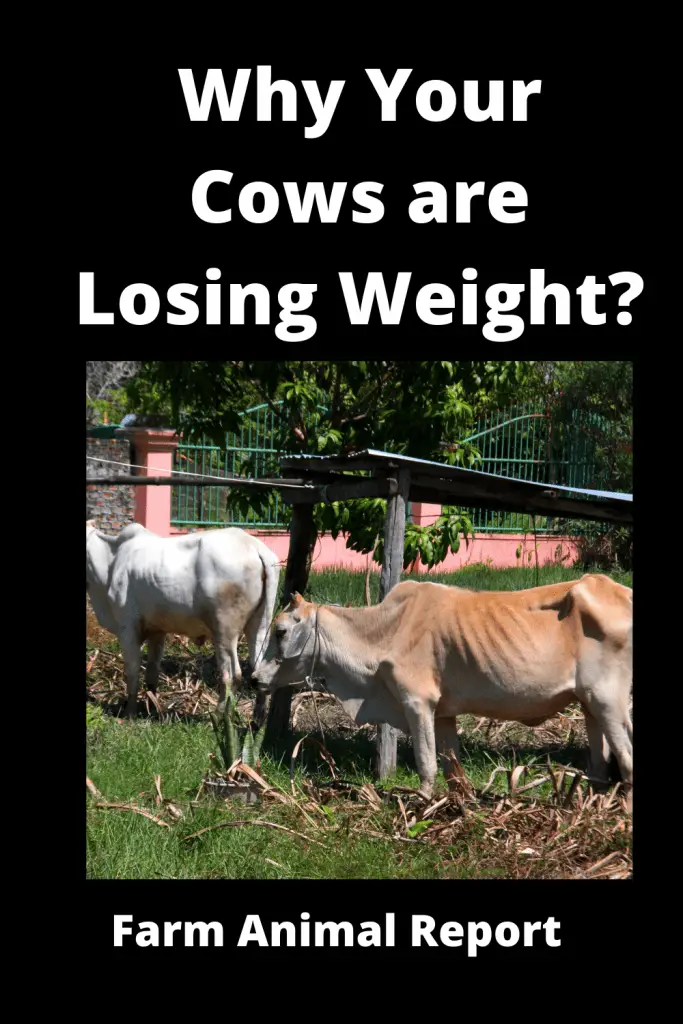
Results of the Hardware Disease:
- Poor appetite
- Depressed
- Reluctant to move
- Indigestion
- Sign of pain when defecating
- If perforation of the heart has occurred, fluid, due to infection, may accumulate around the heart and produce abnormal heart sounds.
- The brisket may be quite flabby due to a large amount of fluid in it.
- The cow may also be bloated.
Wooden tongue:
The disease, wooden tongue, is an infection. It will affect the cattle greatly which can lead them to death if you are late in treating them. The reason for this disease may be rough food and seeds or certain types of feed that wound the tongue.
The bacteria present in the tongue will enter the cattle’s bodies through these wounds. The wounds will lead to infection and pus formation. Then the tongue will prevent the animal to be able to eat and drink because it is very painful for them.
The cows will drool excessively and they lose weight very fast. This will lead them to an inability to eat. They should be treated with antibiotics like tetracycline and iodine. And they should be quarantined from other healthy cows until they are totally cured.
A Parasitic Infestation that causes Weight Loss:
There are two types of parasites:
- External parasites
- Internal parasites/gastrointestinal parasites
Weight Loss Due to Internal Parasites / Gastrointestinal Parasites:
Infections caused by gastrointestinal parasites are one of the most problematic health concerns for cattle all around the world.
Gastrointestinal parasites might cause a wide range of health problems ranging from subclinical disease to actual death. Impaired performance has also been demonstrated as a consequence of parasite burden.
Even though there are several important pasture-borne intestinal parasites, Ostertagia ostertagi and Cooperia oncophora are considered to be the two most economically important parasites.
O. ostertagi and C. oncophora infects the abomasum and the small intestine respectively.
Studies have for decades reported several negative effects such as reduced weight gain, reduced feed intake, and changed general behavior on grazing cattle due to parasite infestations.
Reduced Weight Gain:
The impaired growth caused by parasite infections is partly due to the reduction in the voluntary feed intake, but also to the increased metabolic and nutritional demands on the host animal.
Furthermore, gastrointestinal parasites generate an increased loss of endogenous protein, which might be a potential cause of the reduced weight gain in cattle.
Liver Fluke:
There are the following results of a liver fluke:
- Weakness
- Anemia
- Weight loss
- Fluid accumulation under the jaw known as bottle jaw
- Severely infected animals are depressed, anemic, and may have diarrhea.
Cause- a Liver Parasite:
Fasciola hepatica is a causative agent of this disease. Adult liver fluke is flat, oval organisms 25mm long, that live in the bile ducts of cattle, sheep, goats, and other animals.
Larvae damage the bile ducts of the liver causes loss of appetite, lower growth rates, and reduced milk production.
Weight loss due to External Parasites:
- Mites cause mange. They infect the head, legs, body, or tail region causing the skin to become crusted and cause loss of hair and wool. The infected area itches and animal scratches. The host does not feed well in this way animals getting lost weight.
- Lice also cause irritation of the skin and the animal scratches, rubs and bite the infected areas. The host loses, or does not gain weight, and looks in poor condition. Biting and scratching are the first signs of infection. If you examine the animal you will be able to tell if the skin problem is caused by lice or mites.
- Ticks are very important parasites. They bite the host and suck its blood and when full drop off onto the pasture where they can live for many months without feeding again. Ticks cause the loss of weight, meat, milk, and wool.
Weight loss due to Nutrition Problems:
Energy and Protein Deficiency:
Animals require energy and proteins for different body functions. Energy is required for maintenance( to maintain the body, respiration, and digestion), production(growth, milk, and workforce), and reproduction(pregnancy). An animal derives energy from dietary carbohydrates.
Proteins are required for the formation of body tissue. Protein can be derived from feed and is formed by intestinal flora.
An adequate supply of both energy and protein is essential for the general health of any animal. The requirement of both energy and protein by any animal depends on the bodyweight of the animal and the degree of production expected from an animal.
Energy Deficiencies result in:
- Retarded growth in young animals and a delay in the onset of puberty.
- A shortened lactation in milking animals and a decline in milk production.
- In mature animals, a marked loss of body weight, especially during late pregnancy and early lactation.
- Claves may be born a week and undersized.
Protein Deficiencies results:
- Reduce appetite
- Lowered feed intake
- Lack of muscle development
- A prolonged time to reach maturity
- In mature animals, there is loss of weight and decreased milk production.
Vitamin deficiency
In ruminant diseases, only fat-soluble vitamins A, D, and K have real importance.
Vitamin A:
This is available in most green plants, and if the animals graze on well-managed pastures and forage, deficiencies will not occur.
- Decreased appetite leading to reduced growth.
- In later stages of deficiency, bone growth is affected and this may cause pressure on a nerve to the eye, which may lead to total blindness.
Vitamin D:
There is little vitamin D in plants. Animals obtain most of it from the sun. vitamin D is necessary for the absorption of calcium and phosphorous from the intestine and the deposition of minerals in the bone as well as in the maintenance of normal blood levels.
Rickets is prevalent in smaller animals in their younger stages of development
Results of vitamin D deficiency:
- Reduce weight
- The leg may be bent and there is abnormal swelling, with stiffness and lameness occurring in a number of animals.
Mineral Imbalance:
Minerals are essential for all animals and influence the efficiency of livestock production. Five percent of the bodyweight of the animal consists of minerals.
Farming practices can determine the presence or absence of specific minerals nutrients in animal feed. Heavy application of nitrogen fertilizer can reduce the copper, cobalt, molybdenum, and manganese content of pasture. Lime may reduce plant copper, cobalt, zinc, and manganese levels but increase the molybdenum content.
At least 15 mineral elements have been identified as nutritionally essential for ruminants. There are 7 major minerals Calcium, Phosphorous, Potassium, Sodium, Magnesium, and Sulfur, and 8 trace minerals.
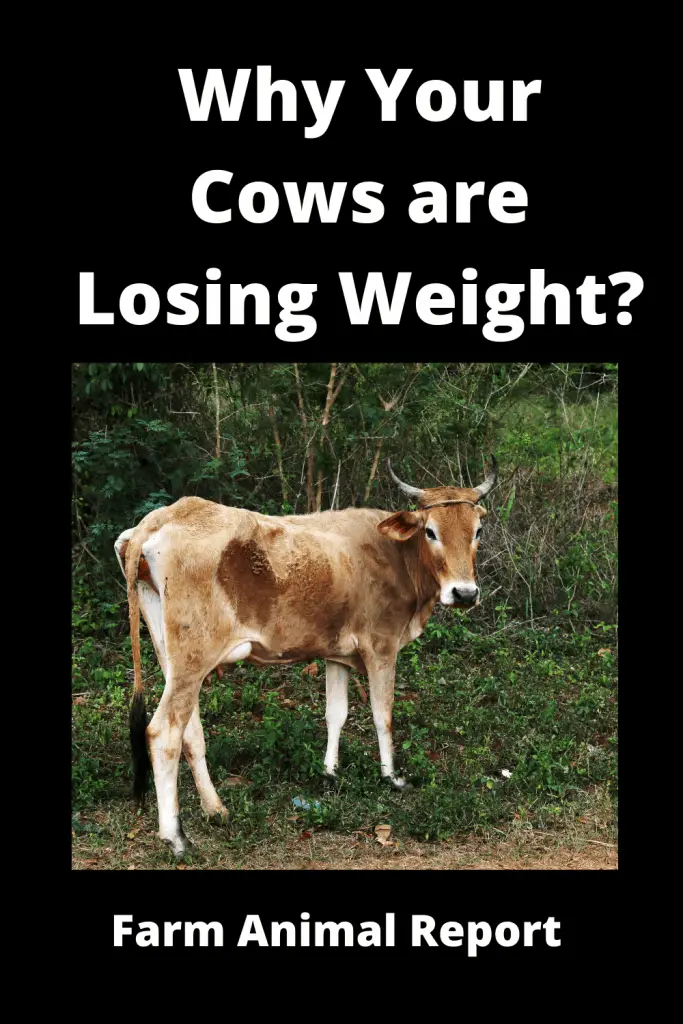
Results of Calcium and Phosphorus Deficiencies:
- 99% of the calcium and 80% of the phosphorus in the entire body are found in the bone and teeth.
- Calcium is essential for the skeletal formation, normal blood clotting, neuromuscular, and permeability of membranes.
- Weakened bones
- Slow growth
- Low milk production
- Fragile bone
- General weakness
- Emaciation
- Stiffness
- Reduce milk production
Results of Potassium Deficiency:
Potassium deficiency results in non-specific signs such as:
- Slow growth
- Reduce feed and water intake
- Lowered feed efficiency
- Muscular weakness
- Nervous disorder
- Stiffness and emaciation.
Results of Sodium and Chlorine Deficiency:
- The initial sign of sodium and chlorine deficiency is a craving for salt. Deficient animals will like wood, soil, and sweat from other animals and drinking water.
- A prolonged deficiency causes loss of appetite, decreased growth, unhealthy appearance, reduced milk production, and loss of weight.
Results of Cobalt Deficiency:
- Animals on cobalt deficient pastures gradually lose appetite, and failure of growth or loss of weight is followed by extreme loss of appetite, rapid muscular wasting, depraved appetite, severe anemia, and death.
Results of Copper and Molybdenum Deficiency:
Copper is essential in hemoglobin production, the functioning of enzyme systems, as a component of various body pigments, and is involved in the central nervous system, bone metabolism, and heart function.
Copper is interrelated with other dietary factors including Molybdenum, sulfur, and other trace element.
Results of copper deficiency include:
- Scours
- Pale mucous membranes
- Slow growth and loss of weight
- Bones may break easily and affected cattle may move like a pacing horse rather than like normal cattle
- Copper-deficient cattle may die suddenly when exerted.
How Much Does a Healthy Cow Weigh?
A cow weighs between 600 and 1,400 lbs. depending on the cow breed.
For example, a Jersey cow weighs about 646 lbs., an Angus cow weighs 832 lbs., and a Holstein cow weighs 992 lbs. A healthy cow usually starts gaining weight after 5 months of age, but it will eventually lose so much weight that it starts losing weight after 3 to 4 years of age.
A cow that weighs 800 lbs. will produce about 480 lbs. of milk per year, while a cow that weighs 1,300 lbs. will only produce around 650 lbs. of milk per year since it is more likely to be injured and therefore less productive over time than the cow that weighs 800 lbs.
Beef Cattle are much bigger than dairy cow breeds. A typical cow that weighs 1,260 lbs., will produce 910 lbs. of meat after slaughtering.
1 Month – 100-200 lbs.
2 Months – 200-400 lbs.
5 Months – 600-800 lbs. (which is the average cow weight)
3 years old: 476-992 lbs.
4 Years old: 554-1,188 lbs.
5 Years old: 646-1,260 lbs.


